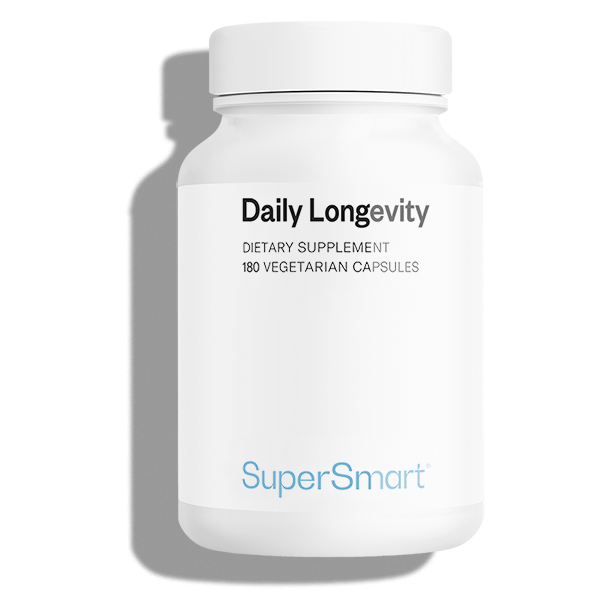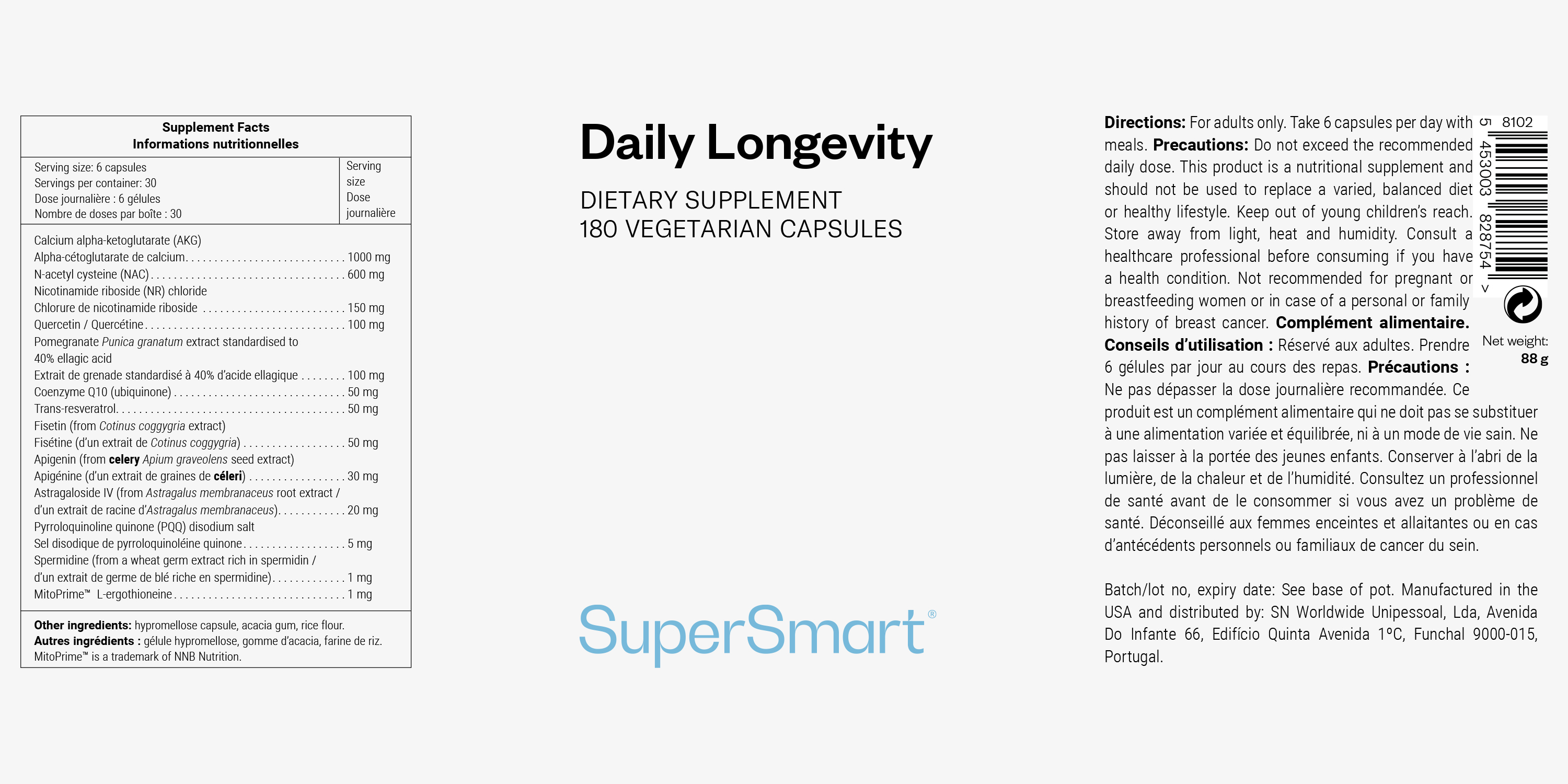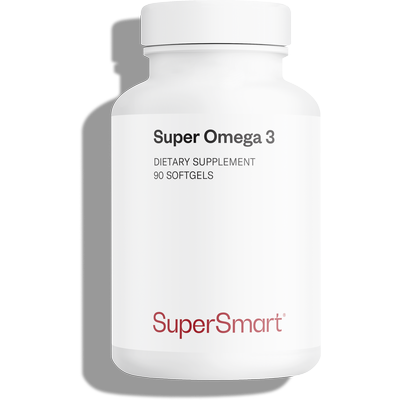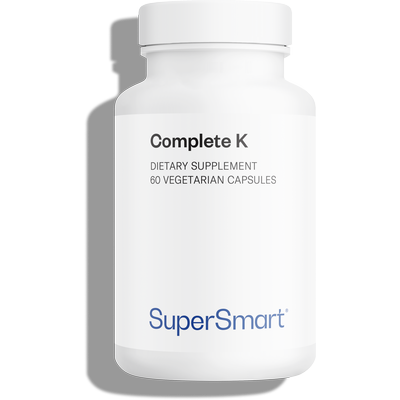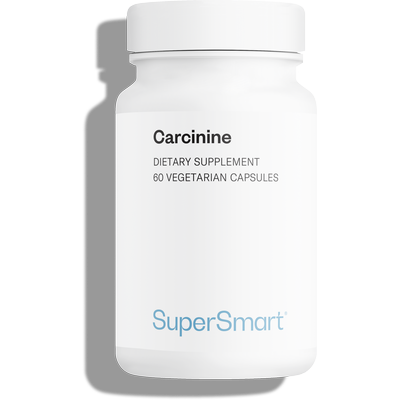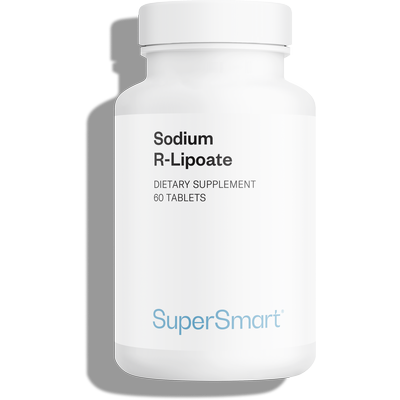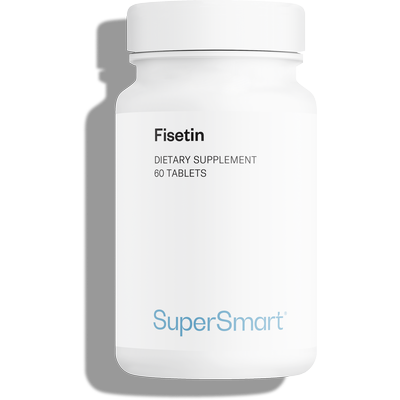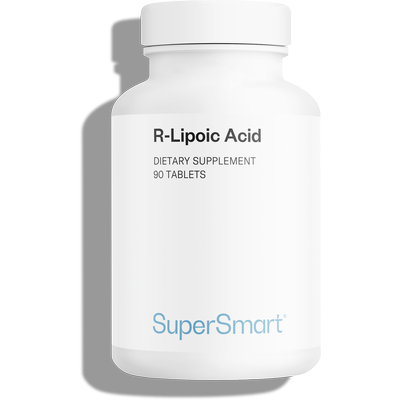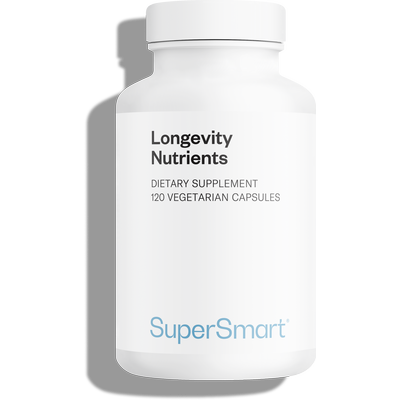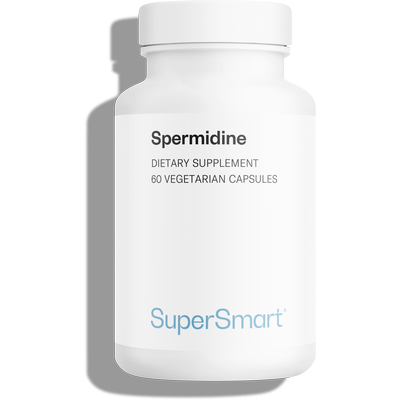Daily Longevity is an ‘anti-ageing’ food supplement that combines the best active ingredients from cutting-edge longevity research.
It has the unique advantage of simultaneously tackling the 12 key mechanisms of ageing.
Daily Longevity is therefore included in our product category dedicated to longevity.
Composition and benefits of our all-in-one 'anti-ageing' supplement
What are the 12 fundamental mechanisms of ageing?
The 12 fundamental mechanisms of ageing refer to the main biological processes that govern the gradual alteration of the body over the years.
They were first presented in 2013 by López-Otín et al. in their landmark article The Hallmarks of Aging (1), which was updated in 2023 to extend the original 9 features to 12 (2).
The aim of this characterisation is to define the key processes that contribute to ageing (genomic instability, telomere attrition, etc.) and to identify the most effective anti-ageing interventions.
What are the 13 key ingredients in our synergistic formula for longevity?
Based on the most recent scientific advances, Daily Longevity brings together the 13 most powerful active ingredients seen as natural solutions to the 12 crucial mechanisms of ageing:
| Genomic instability | Explanation: DNA damage accumulates with age, leading to cellular dysfunction. | |
| Trans-resveratrol | This polyphenol of the stilbene class is being studied for its potential ability to activate sirtuins, which regulate DNA repair. | |
| N-acetylcysteine (NAC) | This cysteine derivative, reputed to be a precursor of glutathione, seems capable of protecting DNA against oxidative damage and mutations. | |
| Quercetin / L-ergothioneine MitoPrime™ | This polyphenol and this sulphur-containing amino acid are powerful antioxidants capable of stabilising DNA. | |
| Telomere attrition | Explanation: shortening of telomeres (caps protecting chromosomes) leads to cellular senescence and tissue dysfunction. | |
| Astragaloside IV | This saponoside extracted from astragalus could stimulate telomerase, the enzyme involved in maintaining telomeres. | |
| Pyrroloquinoline quinone (PQQ) | This redox molecule is reputed to protect telomeres by limiting mitochondrial oxidative stress. | |
| Fisetin | This flavonoid, naturally present in certain fruits, is being studied for its possible ability to reduce systemic inflammation, a factor likely to accelerate telomere erosion. | |
| Epigenetic alterations | Explanation: changes in the regulation of gene expression contribute to ageing and the onset of various disorders. | |
| Nicotinamide riboside (NR) | This vitamin B3 derivative is thought to participate in the production of NAD+, a coenzyme involved in the production of cellular energy. It is being studied in particular for its possible role in sirtuin activation and epigenetic regulation. | |
| Trans-resveratrol | This well-known polyphenol could activate sirtuins, which are known to influence the expression of age-related genes. | |
| Fisetin | Studies suggest that this flavonoid could modulate the expression of genes associated with longevity and cellular resistance to stress. | |
| Apigenin | Another flavonoid being studied for its potential ability to inhibit the CD38 enzyme, thereby helping to preserve NAD+ and support epigenetic regulation. | |
| Deficient macroautophagy | Explanation: impaired elimination of damaged cellular components contributes to ageing and dysfunction of the body. | |
| Spermidine | This polyamide, naturally present in cells, plays a key role in autophagy processes, an essential mechanism for cleaning and recycling cells. | |
| Trans-resveratrol | This polyphenol is also known to activate sirtuins, a mechanism that could reinforce autophagic processes and support cell function. | |
| Apigenin | This flavonoid is being studied for its possible ability to promote autophagy by inhibiting certain signalling pathways that limit the natural mechanisms of cellular cleansing. | |
| Loss of proteostasis | Explanation: protein misfolding and aggregation cause cell dysfunction, particularly in neurodegenerative disorders. | |
| Spermidine | This endogenous polyamine stimulates autophagy processes, promoting the recycling of malformed or oxidised proteins and thus contributing to cell maintenance. | |
| L-ergothioneine MitoPrime™ | This naturally occurring sulphur-containing amino acid is thought to protect proteins against oxidative damage and glycation. | |
| Deregulation of nutrient sensitivity | Explanation: age-related disturbances in metabolic pathways (insulin, AMPK, mTOR...) contribute to amplifying ageing. | |
| Nicotinamide riboside (NR) | This molecule could activate the AMPK pathway, a key regulator of energy metabolism, and is being studied for its potential effect on insulin sensitivity. | |
| Calcium alpha-ketoglutarate (Ca-AKG) | Ca-AKG is thought to be involved in mitochondrial metabolism and may enhance AMPK signalling. | |
| Fisetin | This flavonoid is thought to modulate insulin signalling and reduce age-related metabolic inflammation. | |
| Mitochondrial dysfunction | Explanation: the decline in mitochondrial function leads to a reduction in energy production and an increase in oxidative stress. | |
| Coenzyme Q10 | Coenzyme Q10 or ubiquinone is thought to be involved in the production of ATP within the mitochondria and is reputed to protect them from oxidative stress. | |
| Pyrroloquinoline quinone (PQQ) | This redox molecule is thought to stimulate mitochondrial biogenesis, encouraging the formation of new mitochondria and more efficient cellular metabolism. | |
| Nicotinamide riboside (NR) / Calcium alpha-ketoglutarate (Ca-AKG) | These two compounds support the production of NAD+ and participate in the Krebs cycle, thus contributing to cellular energy production and mitochondrial vitality. | |
| Ellagic acid | This acid is metabolised in the body to urolithin A, which stimulates mitophagy, the selective degradation of mitochondria by autophagy. | |
| Cellular senescence | Explanation: with age, the accumulation of ‘zombie cells’ releasing inflammatory signals progressively damages tissues. | |
| Quercetin | This plant flavonoid is thought to inhibit certain senescence markers and limit the accumulation of aged cells within tissues. | |
| Fisetin | Regularly considered to be a powerful natural senolytic, it is thought to promote the elimination of senescent cells and support cell renewal. | |
| Chronic inflammation | Explanation: increased inflammation and the accumulation of metabolic by-products accelerate biological wear and tear. | |
| Spermidine | This polyamine stimulates autophagy processes, promoting the recycling of altered proteins and lipids to maintain cellular balance. | |
| N-acetylcysteine (NAC) / Quercetin | These two compounds are thought to help neutralise free radicals and reduce oxidative waste accumulated in cells. | |
| Stem cell depletion | Explanation: the body experiences a reduction in tissue regeneration capacity, due to a decline in stem cell function. | |
| Spermidine | This endogenous substance protects stem cells by activating autophagy and reducing cellular inflammation. | |
| Astragaloside IV | This saponoside is thought to help preserve the integrity of stem cells by reducing oxidative stress and supporting their capacity for renewal. | |
| Impaired cell communication | Explanation: dysfunctional cell signalling often occurs as a result of the development of chronic inflammation. | |
| Apigenin | This is believed to help reduce inflammation and improve intercellular communication. | |
| Trans-resveratrol | This activates sirtuins, enzymes involved in cell signalling and the stress response. | |
| Dysbiosis of the intestinal microbiota | Explanation: age-related changes in the intestinal microbiota contribute to systemic inflammation and metabolic decline. | |
| Ellagic acid | This is metabolised by the intestinal microbiota into urolithin A, which is thought to improve intestinal health and reduce inflammation. | |
| Quercetin | Studies suggest that this flavonoid protects the intestinal barrier and promotes a balanced microbiota, contributing to a healthy digestive environment. | |
4 key benefits of this synergistic formula for longevity
Daily Longevity has 4 key strengths:
- a complete and unique scientific formula for longevity: Daily Longevity jointly tackles the 12 fundamental mechanisms of ageing (senescence, inflammation, etc.) thanks to an unprecedented combination of nutrients from anti-ageing research;
- the most advanced ingredients in the field: each capsule contains the 13 compounds most studied for their potential effects on cellular and general longevity: nicotinamide riboside, PQQ, spermidine, Ca-AKG, trans-resveratrol, fisetin, apigenin, etc.;
- powerful dosages based on clinical models: the different ingredients are systematically incorporated in clinically relevant doses, for optimum efficacy;
- a vegan, natural and healthy approach: finally, this vegan formula combines compounds of natural or nature-identical origin, and is devoid of any controversial excipients.
What is in Daily Longevity
Any questions?
Our team of nutrition experts and scientists has the answers.
The best supplement to prevent ageing would be a formula designed to act on all 12 key ageing mechanisms: DNA protection, support for cellular energy, etc.
This is precisely the case with Daily Longevity, a comprehensive formula that targets all the major ageing processes.
While there is no method for actually looking 10 years younger, you can slow down the effects of time by adapting your lifestyle.
You can 'rejuvenate without surgery' by adopting an antioxidant diet, getting enough restful sleep, exercising regularly and supporting your general condition with adapted food supplements such as Daily Longevity.
The foods reputed to be the most effective at slowing down the ageing process are those rich in antioxidants, polyphenols and protective nutrients.
Examples include red fruit, green tea, pomegranate and turmeric.
As well as taking Daily Longevity, don't hesitate to fill up on vitamins and minerals with a multivitamin. If possible, opt for a multivitamin that is also rich in valuable phytonutrients such as lutein or lycopene (see Daily 1 or Daily 3).
With increasing age comes brain ageing and cognitive decline. Fortunately, certain compounds have been specially studied for their potential ability to support brain and cognitive health (you can buy NeuroNutrition Formula, for example).
Ageing is also gradually accompanied by joint discomfort. Some food supplements combine ingredients that are excellent for joints, such as vitamin C and bamboo extract (buy Joint Support Formula synergistic supplement, for example).
Need help?
You may also like

